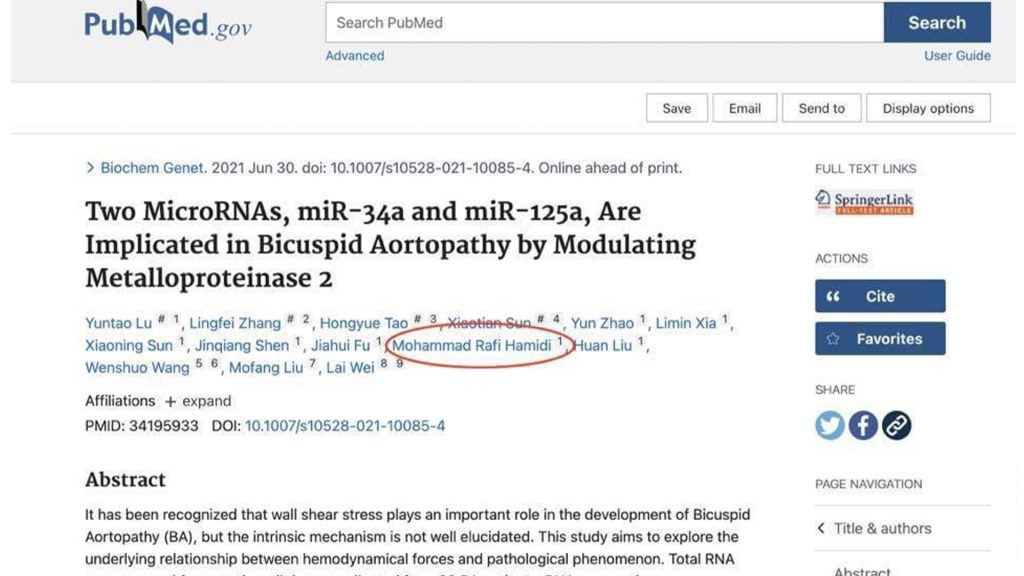Two MicroRNAs, miR-34a and miR-125a, Are Implicated in Bicuspid Aortopathy by Modulating Metalloproteinase 2
Abstract: It has been recognized that wall shear stress plays an important role in the development of Bicuspid Aortopathy (BA), but the intrinsic mechanism is not well elucidated. This study aims to explore the underlying relationship between hemodynamical forces and pathological phenomenon. Total RNA was prepared from aortic wall tissues collected from 20 BA patients. RNA sequencing, bioinformatic analysis and quantitative reverse-transcription PCR validation identified nine miRNAs that were up-regulated in the aortic part exposed to high wall shear stress compared to the low wall shear stress control, and six miRNAs that were down-regulated. Among these candidates, miR-34a and miR-125a, both down-regulated in the high wall shear stress parts, were shown to be potential inhibitors of the metalloproteinase 2 gene. Luciferase reporter assays confirmed that both miRNAs could inhibit the expression of metalloproteinase 2 mRNA in CRL1999 by complementing with its 3′ untranslated region. Conversely, immunofluorescence assays showed that inhibition of miR-34a or miR-125a could lead to increased metalloproteinase 2 protein level. On the other hand, both miR-34a and miR-125a were shown to alleviate stretch-induced stimulation of metalloproteinase 2 expression in CRL1999 cells. The results suggested that miR-34a and miR-125a might be implicated in wall shear stress induced aortic pathogenesis due to their apparent regulatory roles in metalloproteinase 2 expression and extracellular matrix remodeling, which are key events in the weakening of aortic walls among BA patients.
DOI: 10.1007/s10528-021-10085-4





